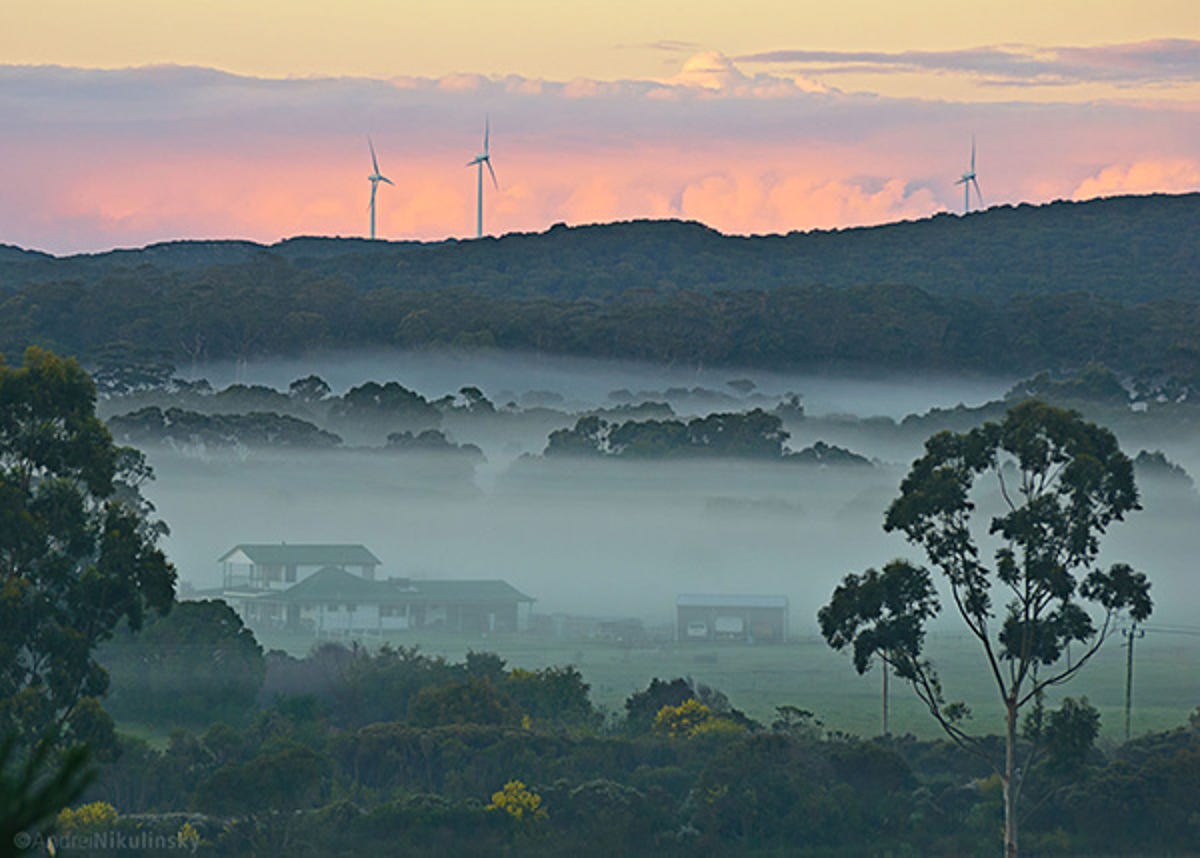
Gledhow South

(Credit: Angela H. King)
Photographer: Andrei Nikulinsky
Speciality: nature, urban scenery
Biography: Andrei is a graphic designer, musician and keen amateur photographer. He has studied design, multimedia and audio engineering and taught these subjects at TAFE and SAE Institute in Perth and Melbourne.
Andrei currently lives in Perth and photographs its streets, people and the surrounding countryside of the South West.
Equipment: Nikon D200, Nikon F2, Nikon F100, Nikon 24mm f/2.8 non-Ai, Nikon 35mm f/2 AF-D, Nikkor-S.C 50mm f/1.4 non-Ai, Nikkor-S.C 50mm f/2 non-Ai, Micro-Nikkor 55mm f/3.5 non-Ai, Nikkor-S.C 55mm F/1.2 non-Ai, Nikkor-H 85mm f/1.8 non-Ai, Nikkor-P 105mm f/2.5 non-Ai, Micro-Nikkor 105mm f/4 Ai, Micro-Nikkor 105mm AF-D f/2.8, Nikkor 70-210 AF-D 70-210mm f/4-5.6, Nikon AF-S 70-300mm f/4.5-5.6 VR, Nikon 200mm f/4 Ai, Nikon 300mm f/4.5 ED-IF Ai-S.
Quick Q&A
What sparked your love of photography?
There were always cameras around my house when I was a kid. Dad is a keen photographer and I have many memories of his treasured cameras and lenses and "helping out" in his bathroom or laundry darkrooms. Mum paints Western Australian wildlife and uses photographs as records of scenes, details and specimens to draw and paint from later. I like to think I absorbed my love of making photographs from the years of slide shows, sharing their trips for field-work and holidays and the photo-wall pin-ups in their lounge and dining rooms.
Tell us about your technique for macro shots of insects. What lenses are you using and how do you work around the creatures?
Hunting insects and spiders for photographs involves walking. Lots of walking ... and crawling, rolling, lying and being bitten by mosquitoes. A spider isn't just something dangerous to spray, a cockroach isn't just a pest to be squashed, they are amazing, interesting, beautiful creatures that live side by side with us in great, wondrous diversity.
I want people to see these creatures as they are, in situ, as much as possible. That means finding and photographing them without disturbing their lives too much. I guess you learn to pick out the shape of critters against their environment. Then once you find them, getting close enough photograph without scaring them off.
The lens I most use for macro photography is the Nikon 105mm f/2.8 AF-D Micro, though I was recently lent an older, manual focus Ai f/4 version which has a significantly different character that I am very much enjoying for making photographs of flowers. I also use the classic 55mm f/3.5 manual non-Ai. I have modified my D200 body so as to mount these old, classic lenses.
How does post-production affect your workflow, if at all?
Post-production is an intrinsic and implicit part of my photography process, but not a huge one. Digital raw images come out of my camera more or less "flat" and I am generally applying noise reduction, small tonal adjustments, sharpening and some cropping. For some "street" images, I have been converting to black and white or experimenting with some "split tone" effects.
I use Adobe's Lightroom and Photoshop software on my Mac to manage and edit my digital photos, and Dad's Nikon Coolscan 9000ED to digitise film.
What's your dream piece of camera equipment if money was no object?
I would very much like a medium-format DSLR with a macro and long telephoto, to shoot insects, spiders and birds. I'm not sure I'm over 35mm yet, but I'd sure like more pixels and resolution to play with! While I'm putting my order in, can I have a Leica M9.x and a couple of lenses for walking around with? Thanks. You have my address.
More of Andrei's work can be seen on his website.
Exposure: Nikon D200, ISO 320, Nikon AF-S 70-300mm f/4.5-5.6 VR, 135mm, 1/80 @ f/4.8
Australian Emerald
Exposure: Nikon D200, ISO 200, Nikon 105mm f/2.8 AF-D Micro, 1/60 @ f/11, SB-600 Speedlight
Rainbow Lorikeet
Exposure: Nikon D200, ISO 100, Nikon 300mm f/4.5 ED-IF Ai-S, 1/200 @ f/8
Hover Fly
Exposure: Nikon D300s, ISO 200, Nikon 105mm f/2.8 AF-D Micro, 1/800 @ f/7.1
Children in Fountain
Exposure: Nikon D200, ISO 200, Nikkor-H 85mm f/1.8, 1/5000 @ f/4
Crosswalk
Exposure: Nikon D200, ISO 400, Nikon 105mm f/2.8 AF-D Micro, 1/1000 @ f/2.8
Flower Spider
Exposure: Nikon D300s, ISO 200, Nikon 105mm f/2.8 AF-D Micro, 1/320 @ f/16, SB-600 Speedlight
White-breasted Sea Eagle
Exposure: Nikon D200, ISO 320, Nikon 300mm f/4.5 ED-IF Ai-S, 1/1000 @ f/8
Pacific Gull
Exposure: Nikon D200, Nikon AF-S 70-300mm f/4.5-5.6 VR, 300mm, 1/1000 @ f/9
Burying Mantis
Exposure: Nikon D200, ISO 100, Nikon 105mm f/2.8 AF-D Micro, 1/60 @ f/13, SB-600 Speedlight
Araneid Spider
Exposure: Nikon D200, ISO 200, Nikon 105mm f/2.8 AF-D Micro, 1/180 @ f/8
Carpet Wolf Spider
Exposure: Nikon D200, ISO 400, Nikon 105mm f/2.8 AF-D Micro, 1/80 @ f/14, SB-600 Speedlight
Darter
Exposure: Nikon D200, ISO 250, Nikon 70-210 mm f/4-5.6 AF-D, 1/1000 @ f/5.6
Laughing Kookaburra
Exposure: Nikon D200, ISO 200, Nikon 300mm f/4.5 ED-IF Ai-S, 1/200 @ f/8
St Andrew's Cross Spider
Exposure: Nikon D200, ISO 200, Nikon 105mm f/2.8 AF-D Micro, 1/60 @ f/16, SB-600 Speedlight
Red Bullant
Exposure:Nikon D200, ISO 200, Nikon 105mm f/2.8 AF-D Micro, 1/160 @ f11
Marbled Gekko
Exposure: Nikon D200, ISO 22, Micro-Nikkor 55mm f/3.5, extension tubes, 1/50 @ f/45, SB-600 Speedlight
Goods Inwards
Exposure: Nikon F2, Nikkor-H.C 50mm f/2, Fuji Superia Xtra 400 (expired), 1/2000 @ f/11
Sunset Over Claremont Train Station
Exposure: Nikon D200, Nikon 18-35mm f/3.5-4.5 AF-D, 18mm, 1/3000 @ f/3.5
Reading Man
Exposure: Nikon D200, ISO 100, Nikkor-S.C 55mm f/1.2, 1/250 @ f/8
Afternoon Arcade
Exposure: Nikon D200, ISO 200, Nikon 18-35mm f/3.5-4.5 AF-D, 18mm, 1/3000 @ f/3.5

